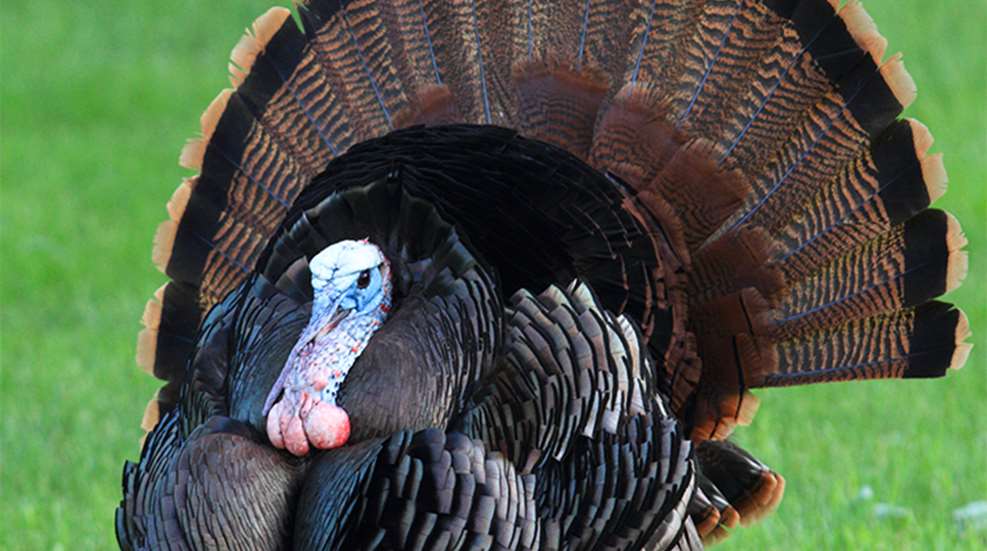
Turkey hunting is fun and occasionally even easy when multiple turkeys sound off from the roost at dawn and gobble into the morning as they wander around looking for hens. On these spring mornings, there can be no doubt where turkeys are located and where to set up to hunt them. What’s more, if a hunter blows one opportunity, he can easily move to another bird to try again provided they stay vocal.
But turkey hunting is a different story if birds are quiet. Perhaps these no-talkin’ turkeys are wary, maybe they’re genetically programmed to clam up, or perhaps they just have sore throats. You might traipse around calling all morning without a single reply before finally asking yourself, “Are there even any turkeys here? Am I wasting my time?”
Don’t despair—here are half a dozen tips on how to hunt silent toms. Above all, remember, if nothing works, don’t give up. Turkeys are finicky animals; there’s a good chance by the following morning or with a subtle change of temperature or maybe just a change of heart, gobblers will begin gobbling like crazy and dying to run straight into your call.
1. Look for Sign—Don’t Just Listen and Hope
Turkeys are living, eating, walking and breeding animals. They leave tracks, scratchings, feathers and droppings everywhere they go. If you find fresh sign, don’t doubt it. Then, understanding this intel—that turkeys are there but they are just being quiet—slow down and hunt as you would hunt for deer or any non-vocal game.
The trick is developing the eye for sign. After a rain, muddy roads, fields and creek banks are great places to find tracks, just as they are when it’s dry and dusty. In oak woods, turkeys scratch away leaves to reveal insects and grubs underneath. Certainly, other animals such as armadillos and hogs do this too, but if the scratchings are deep and plentiful, almost as if someone had taken a rake to the leaves, trust it’s turkeys and shift your tactics from scouting to hunting.
2. Consult Local Intel Sources
Ask farmers, ranchers and neighbors if they’ve seen birds. Often farmers can tell you exactly where the birds will be at any given time of day. If there are no birds, they’ll probably know that too. Even if neighbors aren’t hunters, they’ll hear booming gobbles in the springtime if there are gobbles to be heard. You might begin your inquiry by offering cookies.
3. Glass Fields from Afar
If there are turkeys on the property, there’s a good chance they utilize open crop fields or food plots to strut, feed and preen. Dedicate a morning and evening camped out hundreds of yards away from a prime field, watching with a binocular. If you don’t find any after a day, move to the next field.
4. Scout & Call
If the season has begun and you haven’t located birds yet, get your gear and get in the woods. The goal is to cover ground while scouting and calling—but don’t go so fast and obnoxiously that you spook turkeys before they ever hear your calls. First, try to strike up a bird with a shock call such as an owl or crow call. Do not discount a crow call, as plenty of times gobblers will respond to a crow call when an owl call elicits nothing, or vice versa. So try a shock call, wait a few minutes and try another type of call before breaking out your hen calls.
I prefer a box call for its range when it is windy, and a mouth call for all other times because it’s hands-free. If still nothing answers you, sneak a couple of hundred yards to a new location before repeating the sequence. After a few days of this, you’ll likely see or hear turkeys if they’re around. If you don’t, it might be time to try another area altogether.
5. Slow Down and Still-Hunt
Many times you know a gobbler or two could be around, but for whatever reason they won’t gobble after flying down from the roost. But just because gobblers are quiet doesn’t mean they aren’t interested in hens. This means slowing down and using your senses—your vision, your hearing and your instincts—to hunt the birds like you would hunt deer rather than depending solely on your call.
This means still-hunting, or moving so slowly that you can see birds with your binocular before they see you. It means setting up to call as if you were calling to a gobbler and expecting him to come in. It means figuring out the turkeys’ daily patterns so you place yourself where they are going or where they are going to be rather than trying to call them to you.
6. Call to a Henned-Up Tom at Midmorning
Other times no-gobbling gobblers means they’ve already hooked up with a receptive hen. Often in this case a tom is content to strut and breed without gobbling much. So if you know a gobbler is in the area but you also hear hens and suspect he’s with them, your best bet is to call to him midmorning around 10 a.m. Often hens will ditch their mates around this time when they go to nest. Meanwhile, the ol' boy is by nature a two-timer. So if gobblers aren’t coming to calls in the early morning, try calling again during midmorning rather than hanging it up.



































